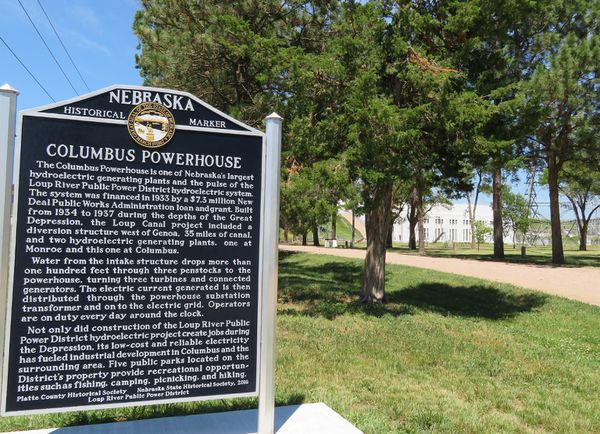Nebraska Historical Marker: Columbus Powerhouse
Nebraska Historical Marker: Columbus Powerhouse
Location
3rd Ave entrance, Powerhouse Park, Columbus, Platte County, Nebraska
View this marker's location 41.462013, -97.329570
View a map of all Nebraska historical markers, Browse Historical Marker Map
Marker Text
The Columbus Powerhouse is one of Nebraska’s largest hydroelectric generating plants and the pulse of the Loup River Public Power District hydroelectric system. The system was financed in 1933 by a $7.3 million New Deal Public Works Administration loan and grant. Built from 1934 to 1937 during the depths of the Great Depression, the Loup Canal project included a diversion structure west of Genoa, 35 miles of canal, and two hydroelectric generating plants, one at Monroe and this one at Columbus.
Water from the intake structure drops more than one hundred feet through three penstocks to the powerhouse, turning three turbines and connected generators. The electric current generated is then distributed through the powerhouse substation transformer and on to the electric grid. Operators are on duty every day around the clock.
Not only did construction of the Loup River Public Power District hydroelectric project create jobs during the Depression, its low-cost and reliable electricity has fueled industrial development in Columbus and the surrounding area. Five public parks located on the District’s property provide recreational opportunities such as fishing, camping, picnicking, and hiking.
Further Information
Bibliography
Marker program
See Nebraska Historical Marker Program for more information.
